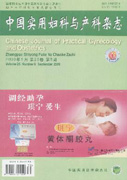|
Risk and prevention of long-term cardiovascular diseases and other diseases in preeclampsia.
XU Huang-fang,LI Xiao-tian
2021, 37(2):
142-145.
DOI: 10.19538/j.fk2021020103
Preeclampsia refers to a common obstetric disease with elevated blood pressure and proteinuria as the main symptoms after 20 weeks of gestation,which is one of the main reasons leading to the rise in maternal morbidity and mortality worldwide. There is growing evidence that the maternal effects of preeclampsia are not limited to pregnancy and puerperium. Women with preeclampsia are at increased risk of developing cardiovascular disease,kidney disease,metabolic syndrome,thromboembolism and diabetes in the future. Strengthening assessment of risk factors,early intervention and clinical monitoring will help reduce the risk of long-term adverse prognosis for women with preeclampsia,which is of great significance for the prevention and treatment of preeclampsia-related cardiovascular diseases,kidney diseases and so on.
|

